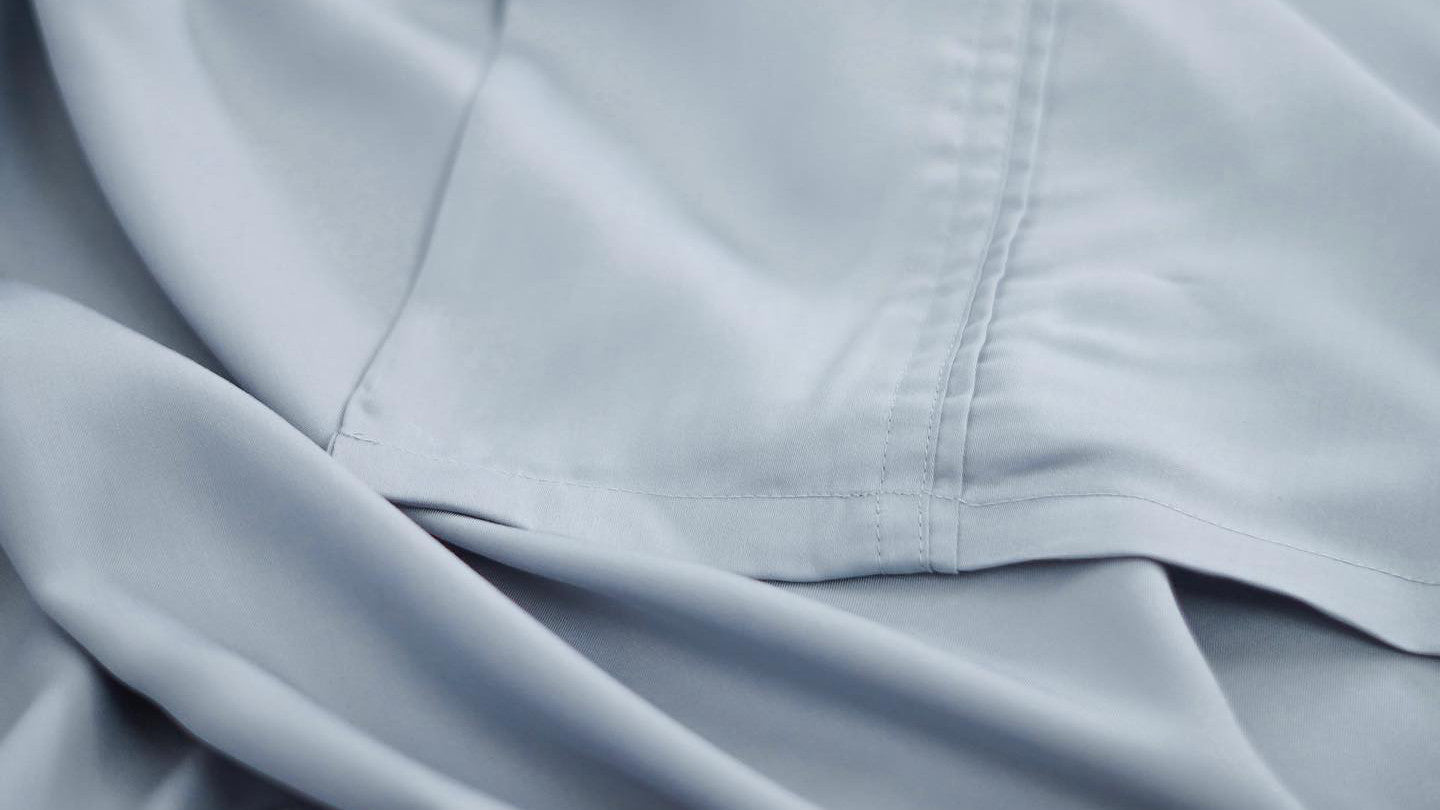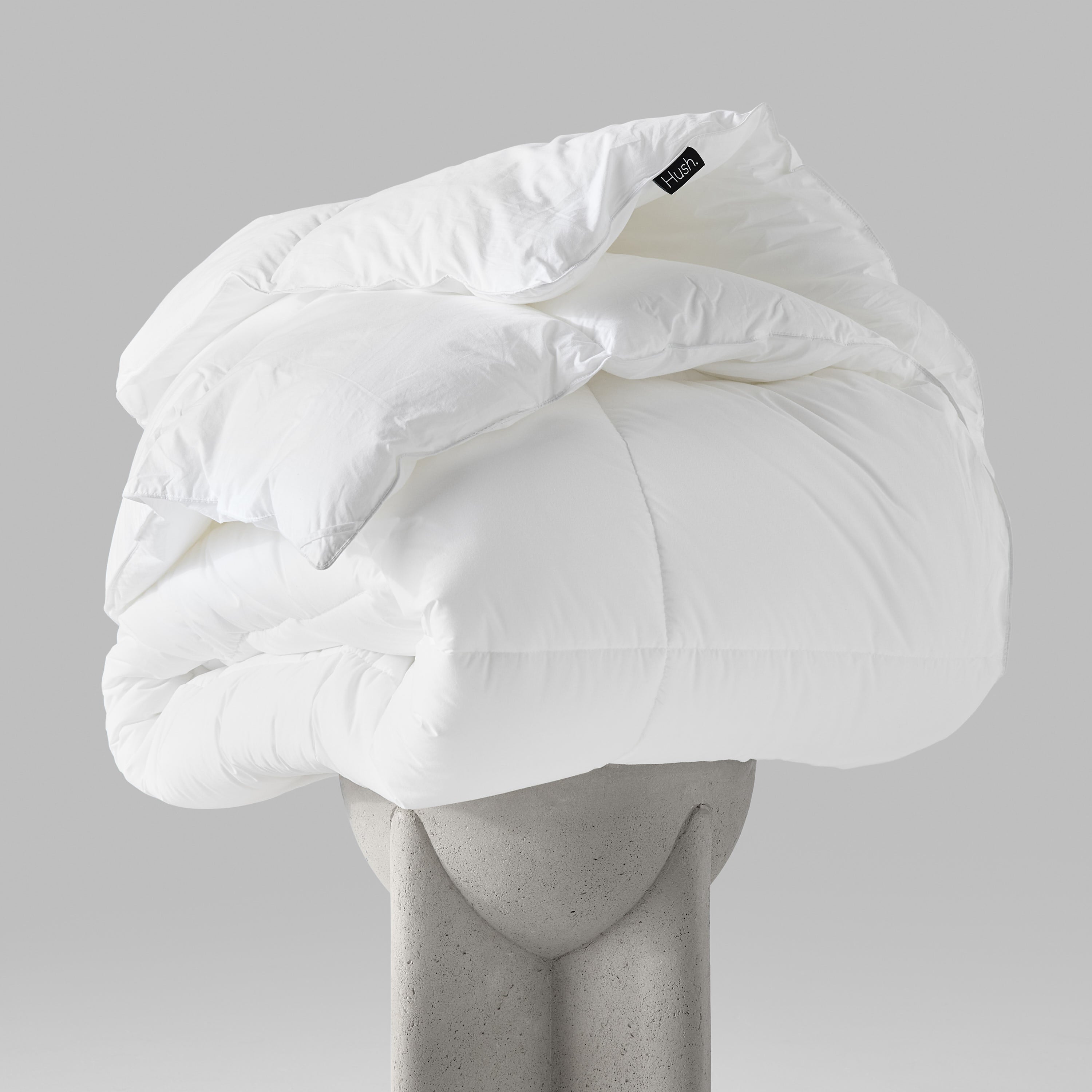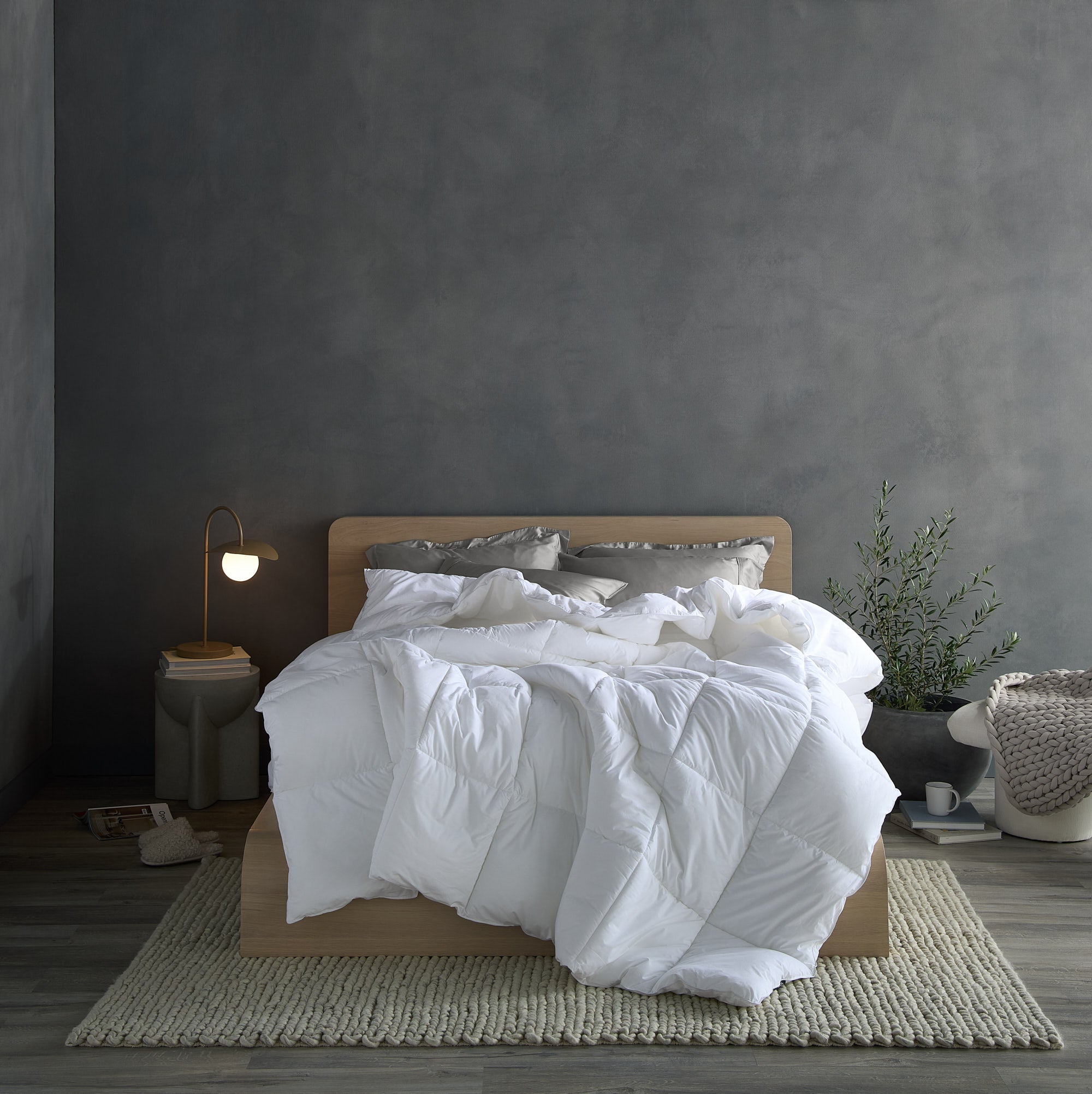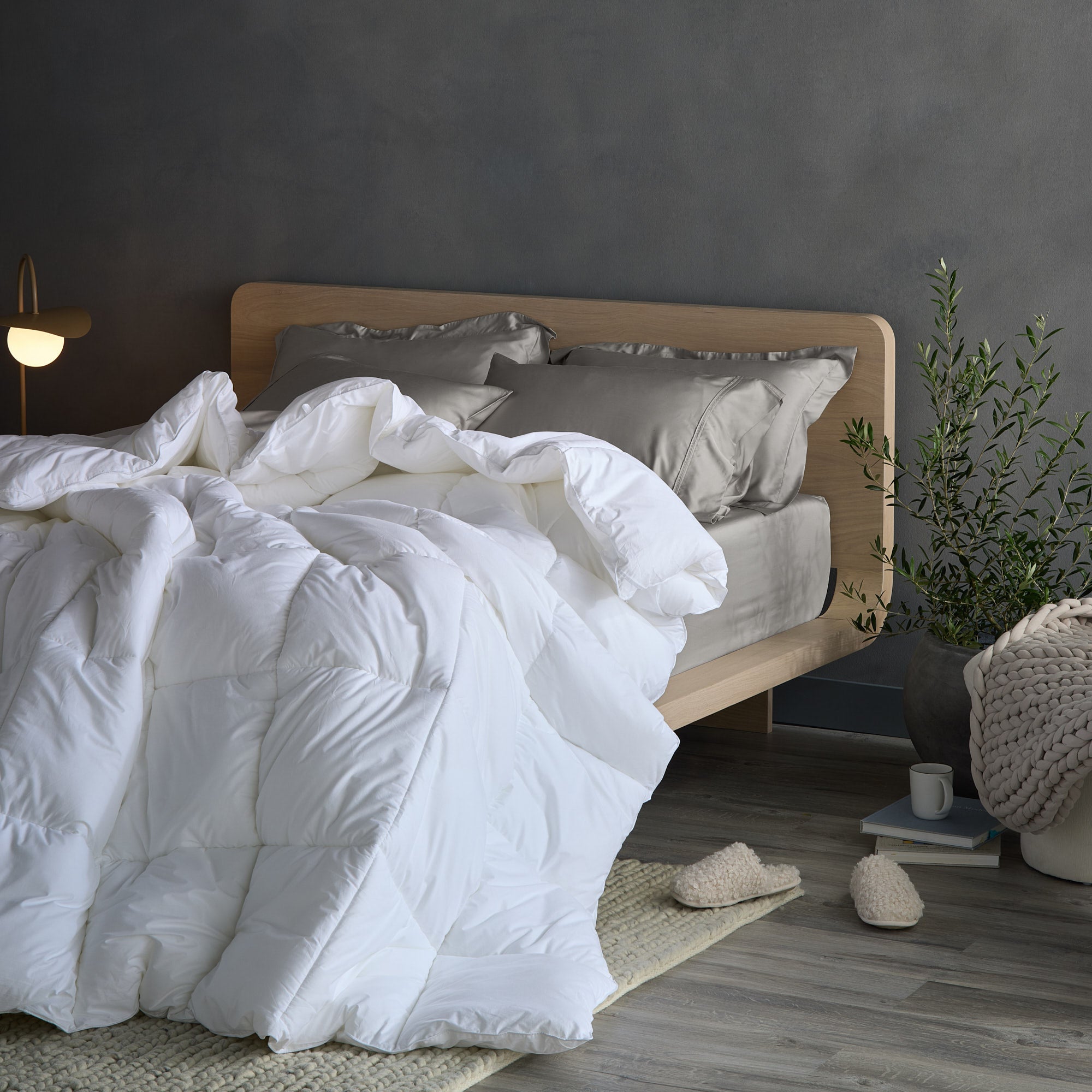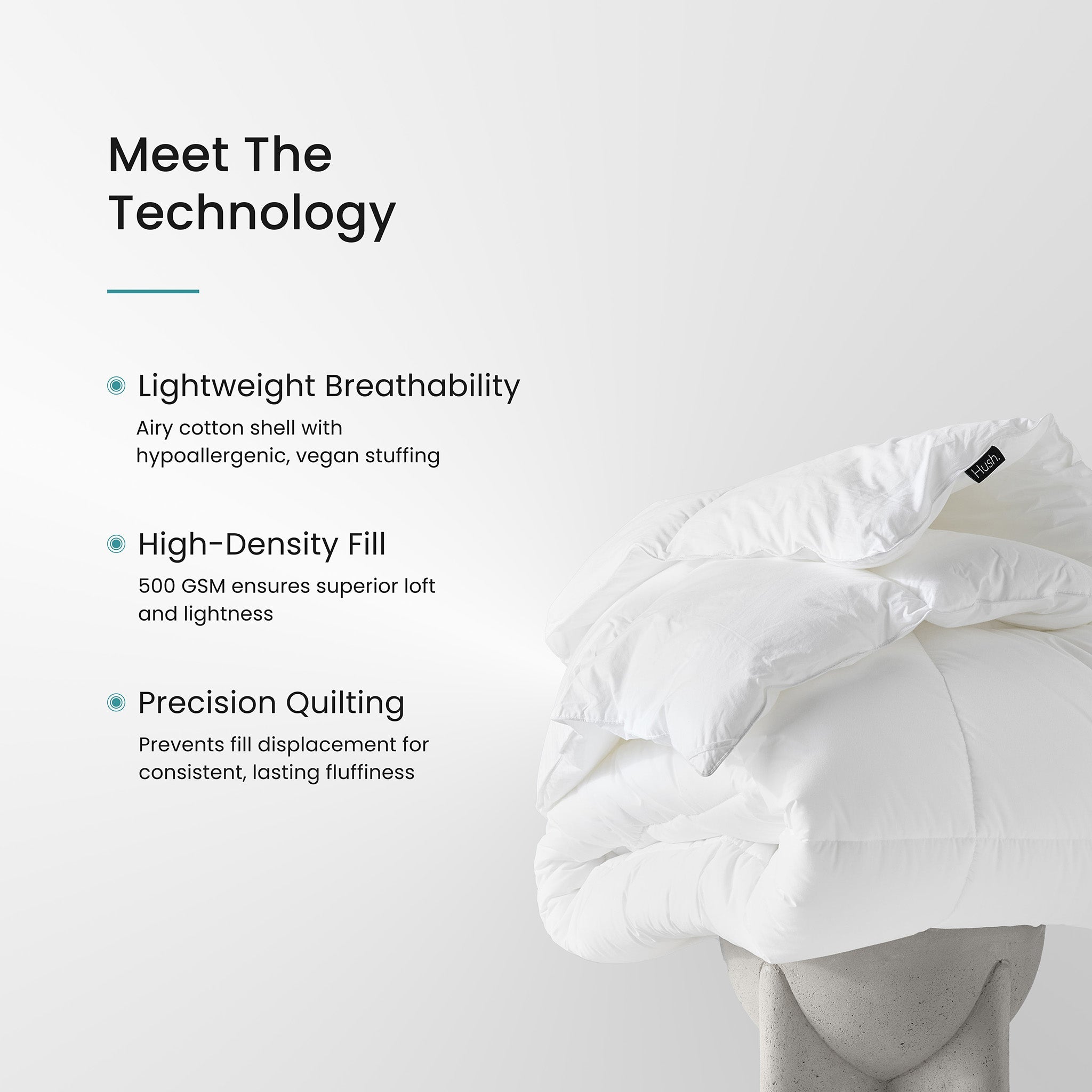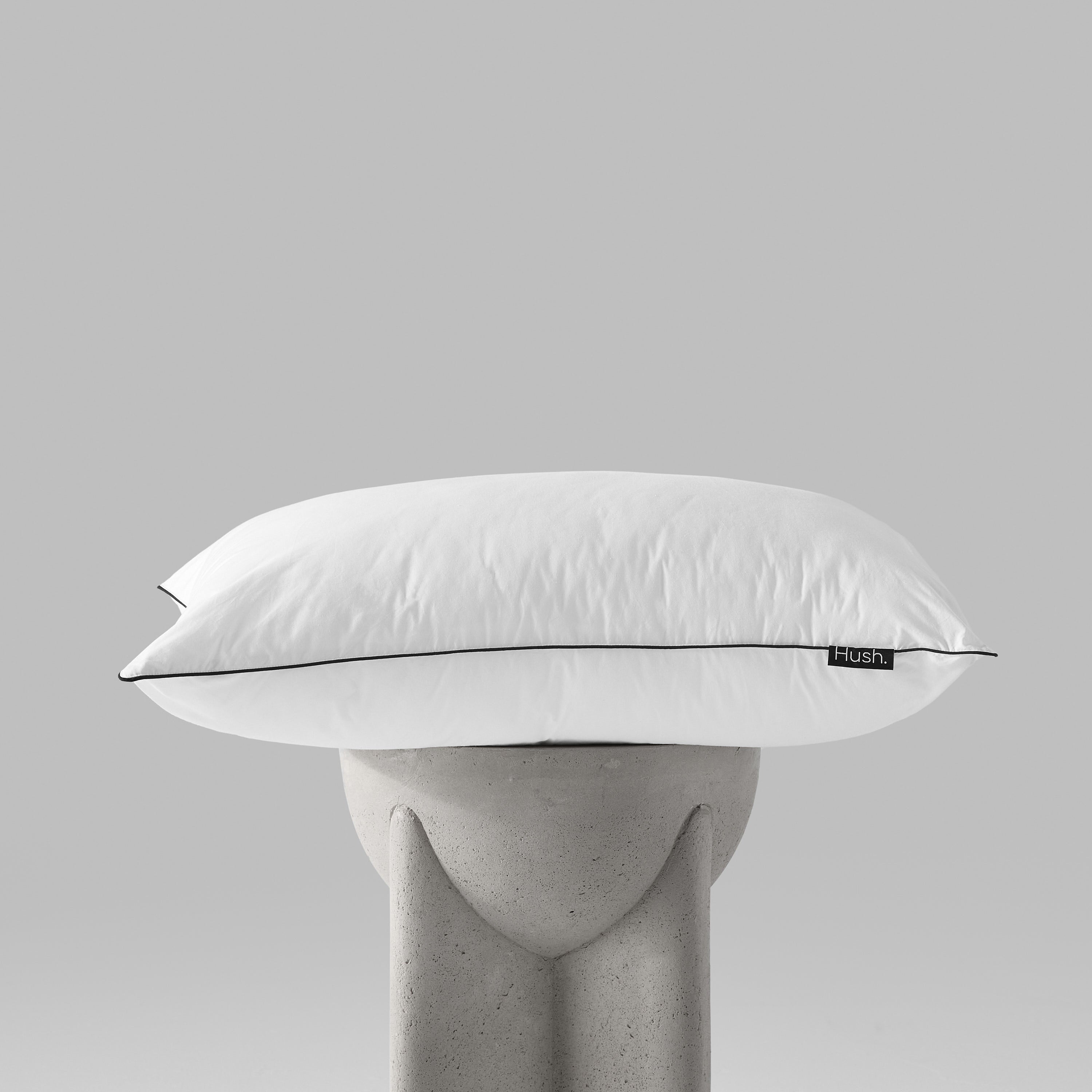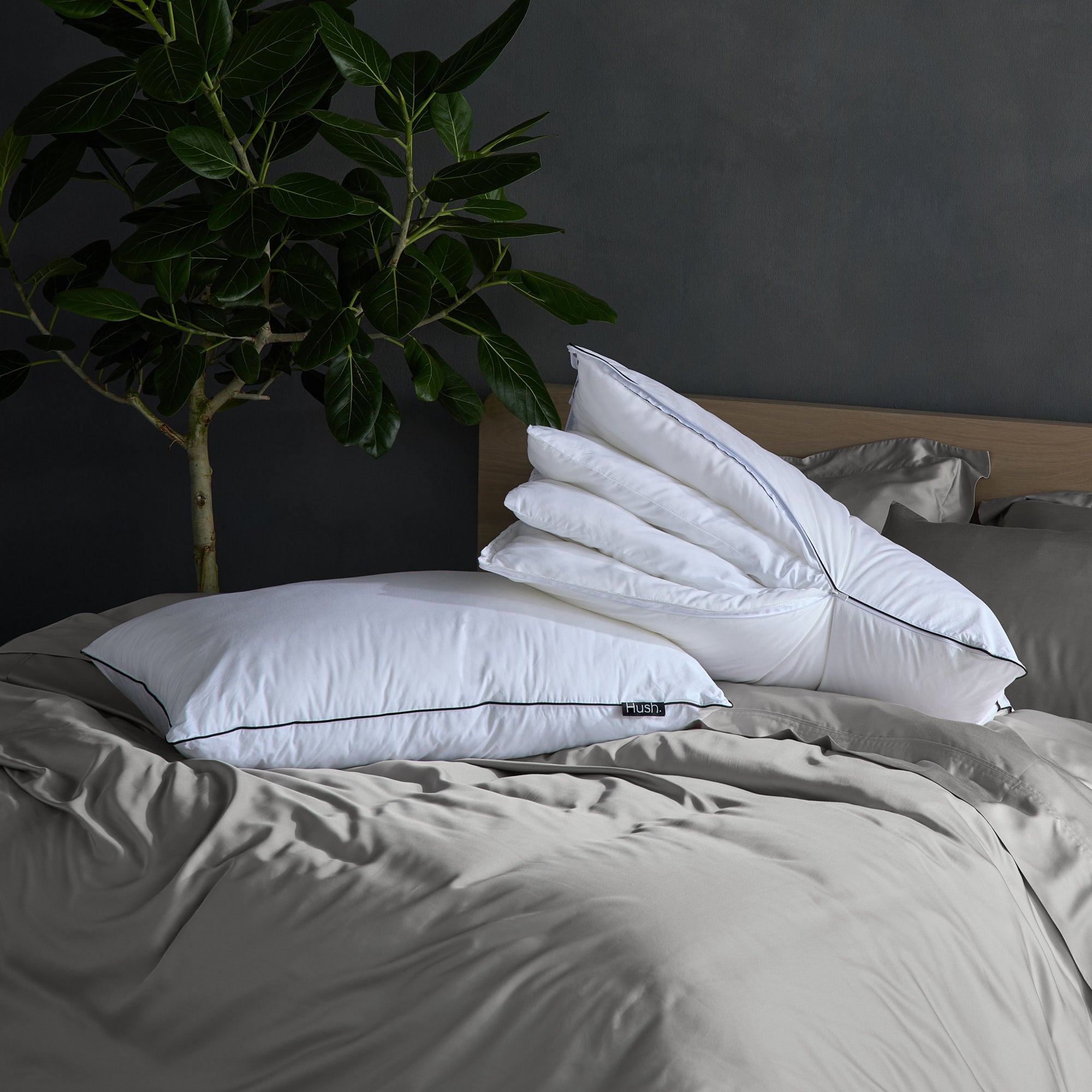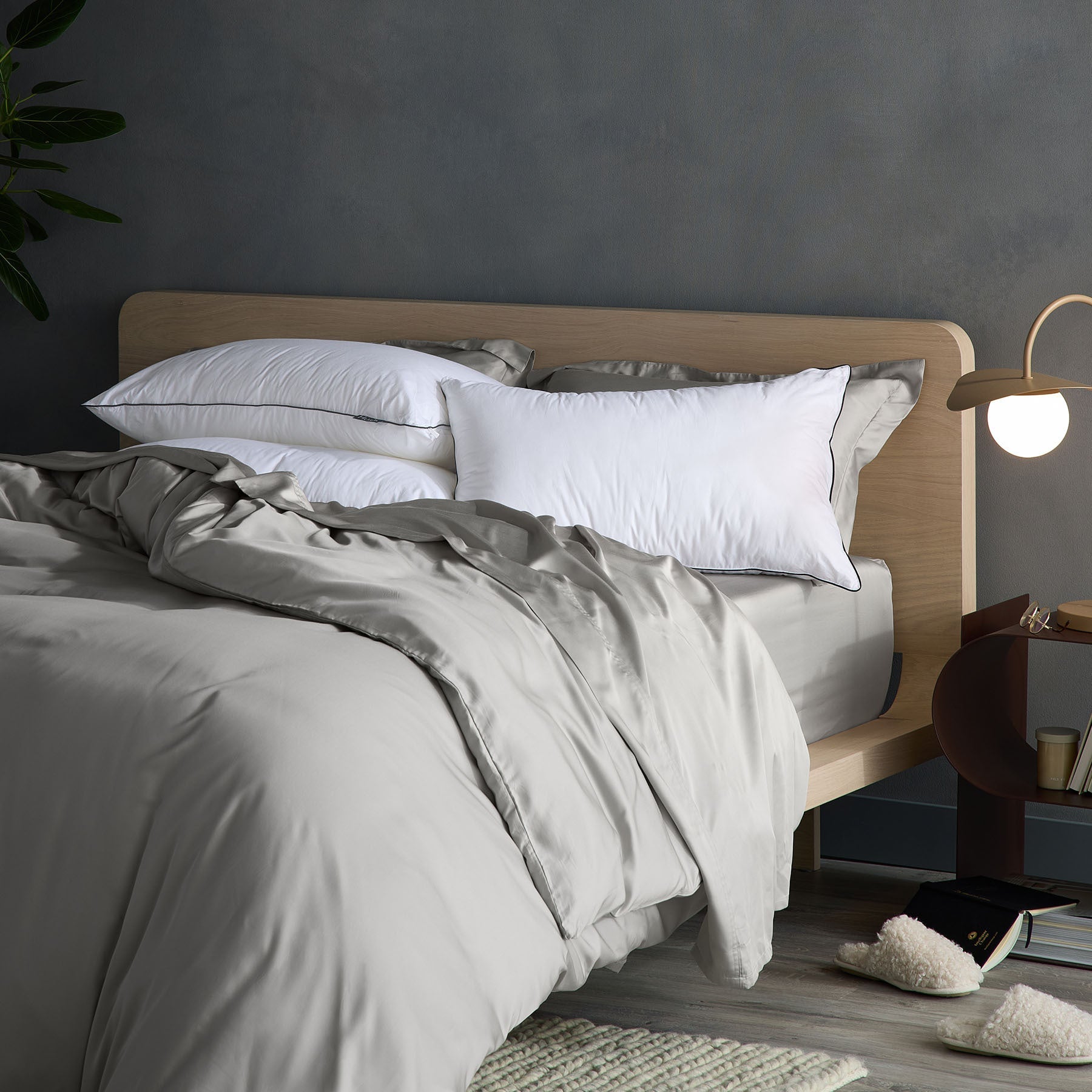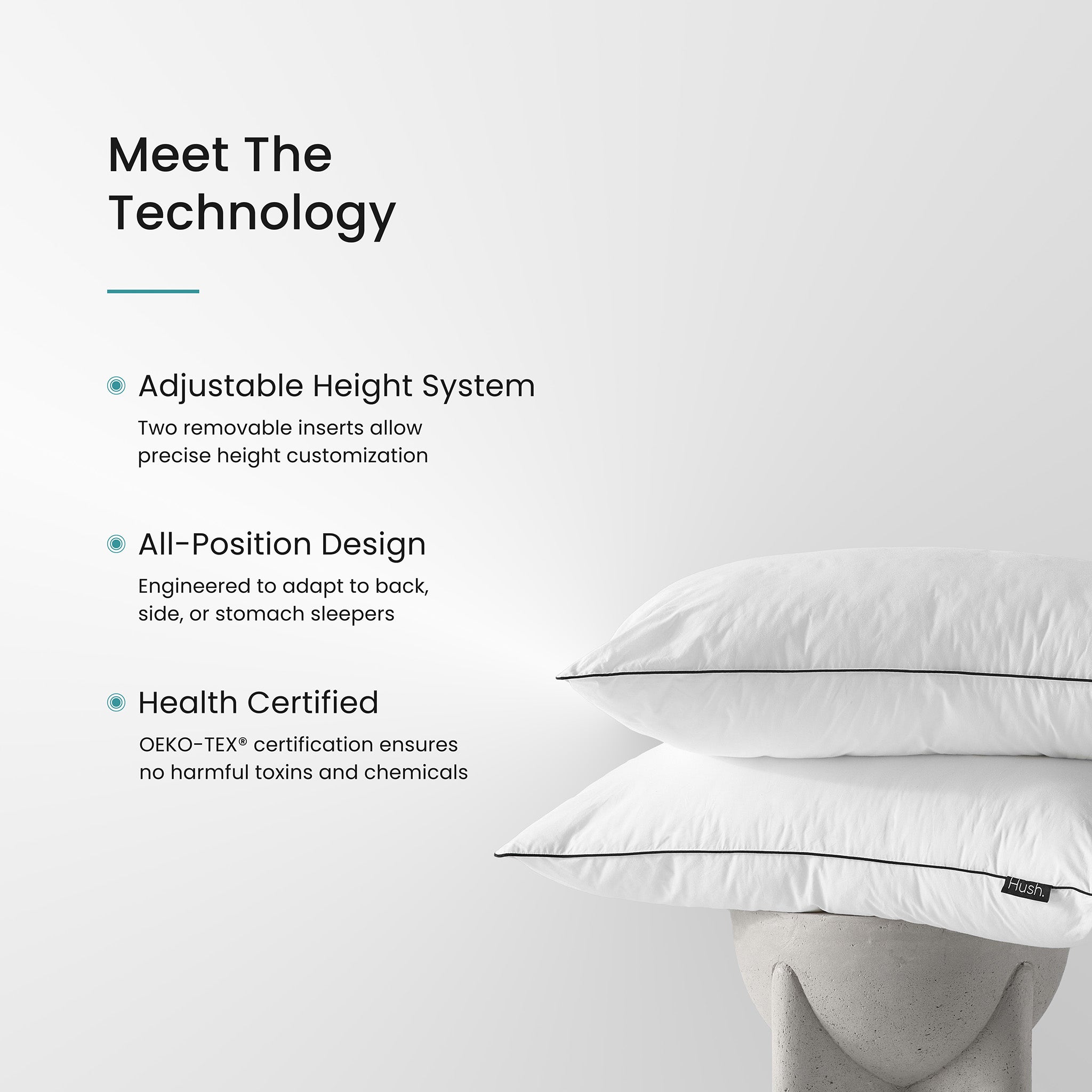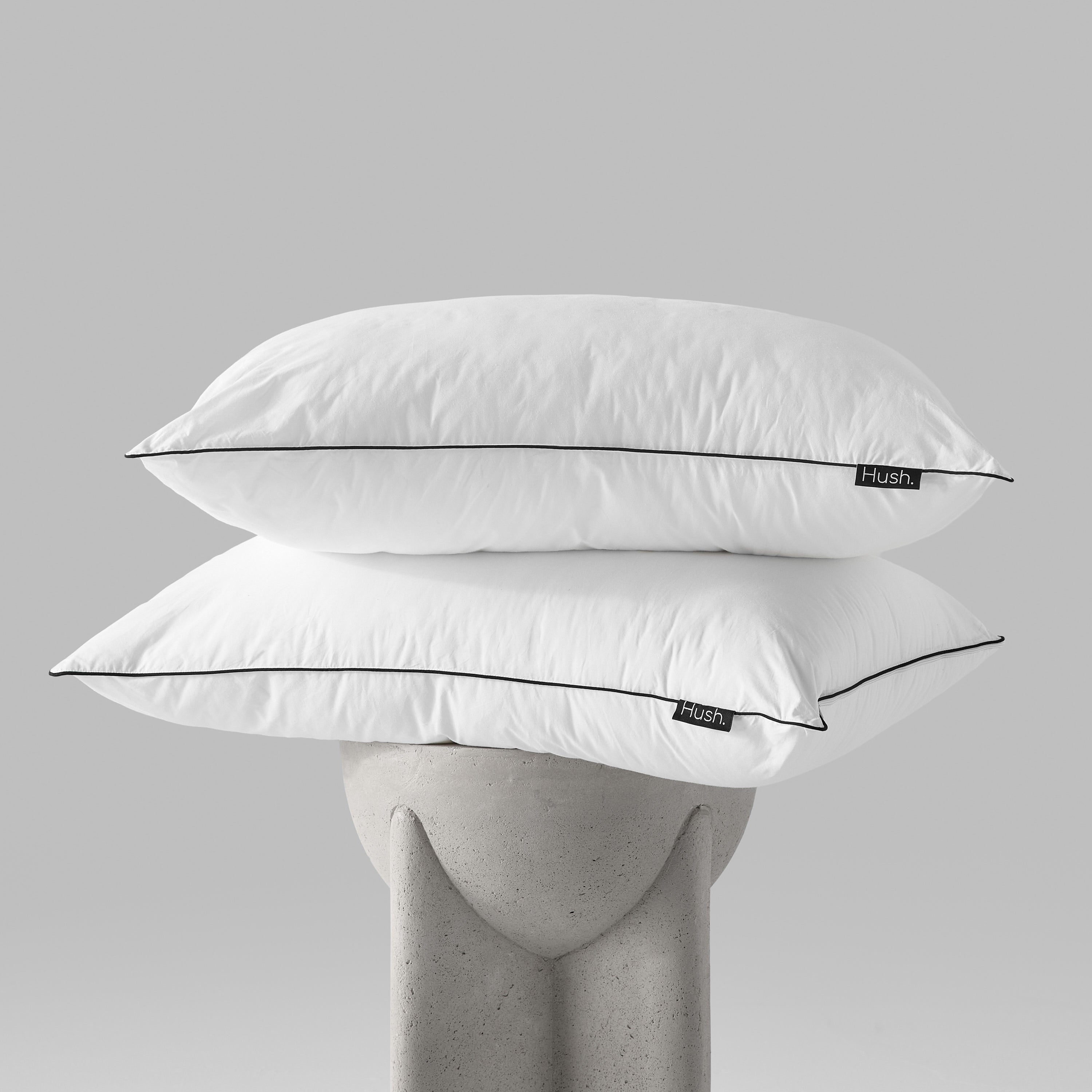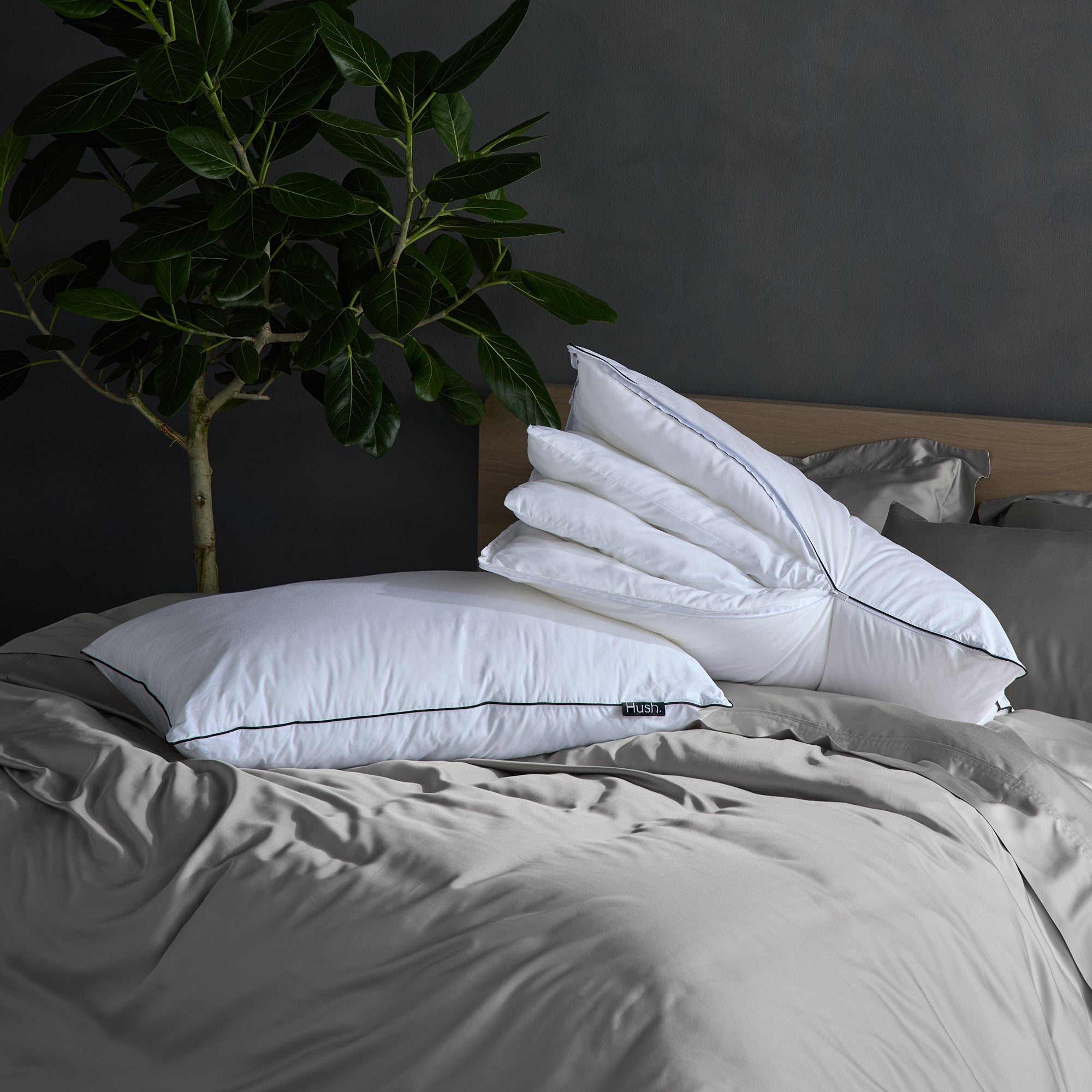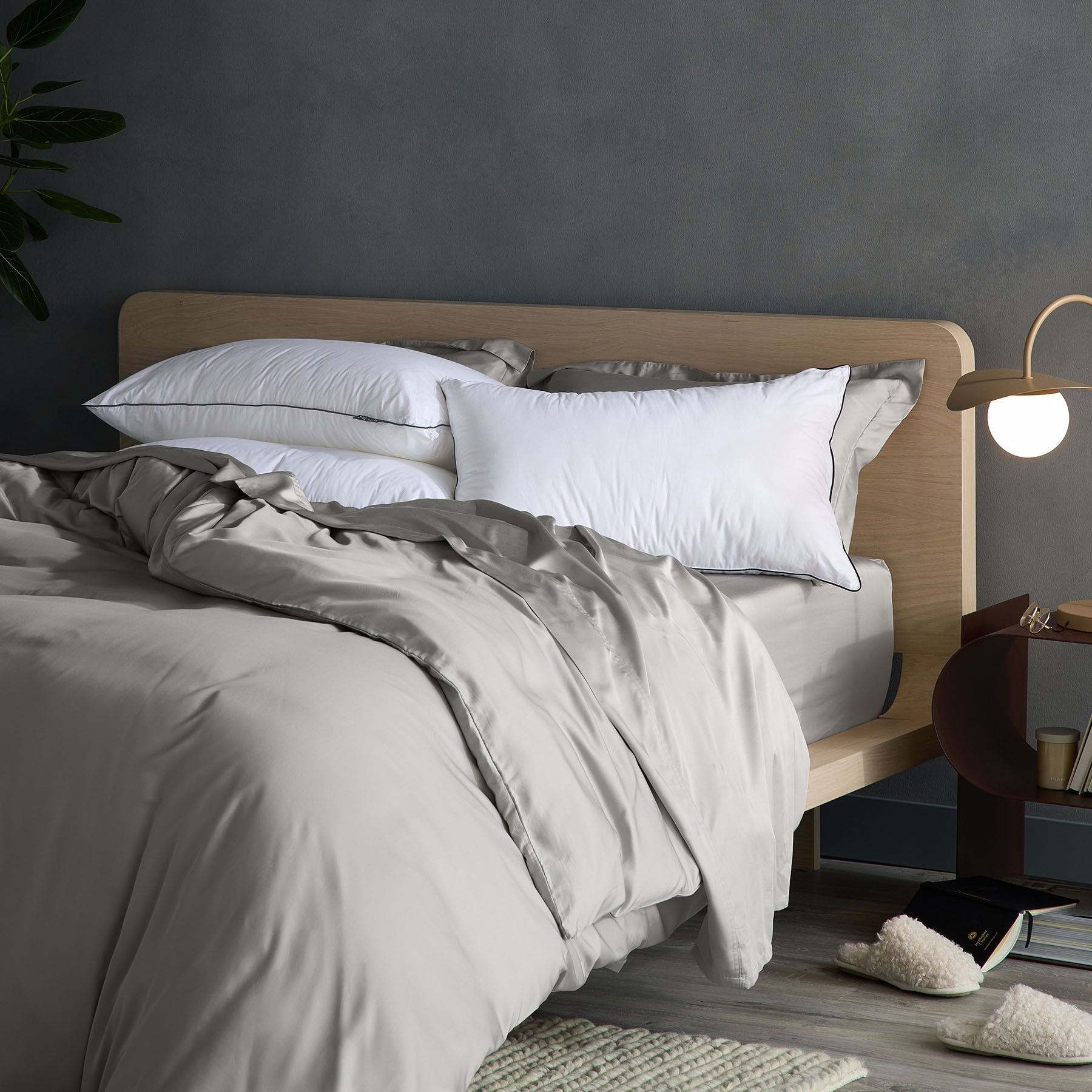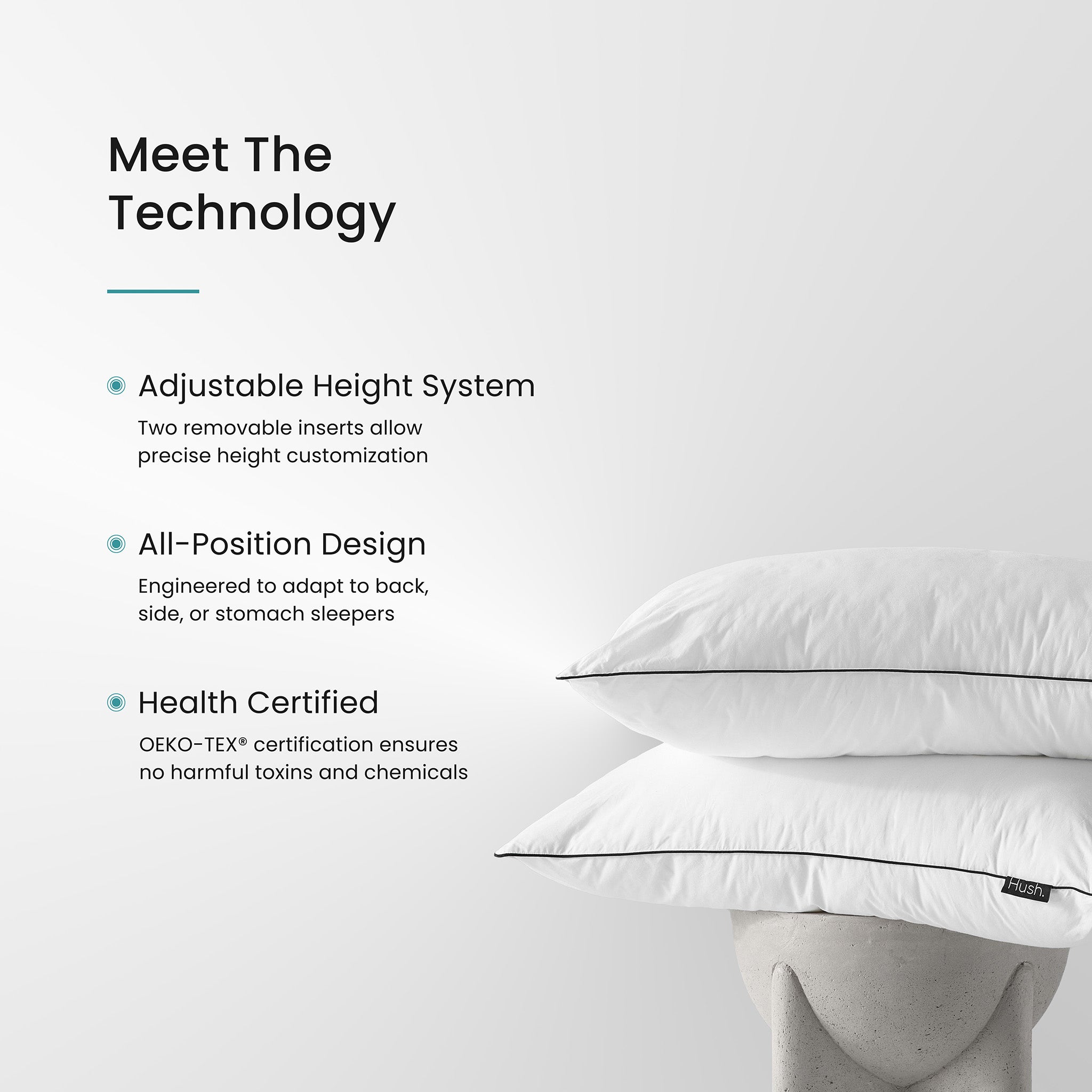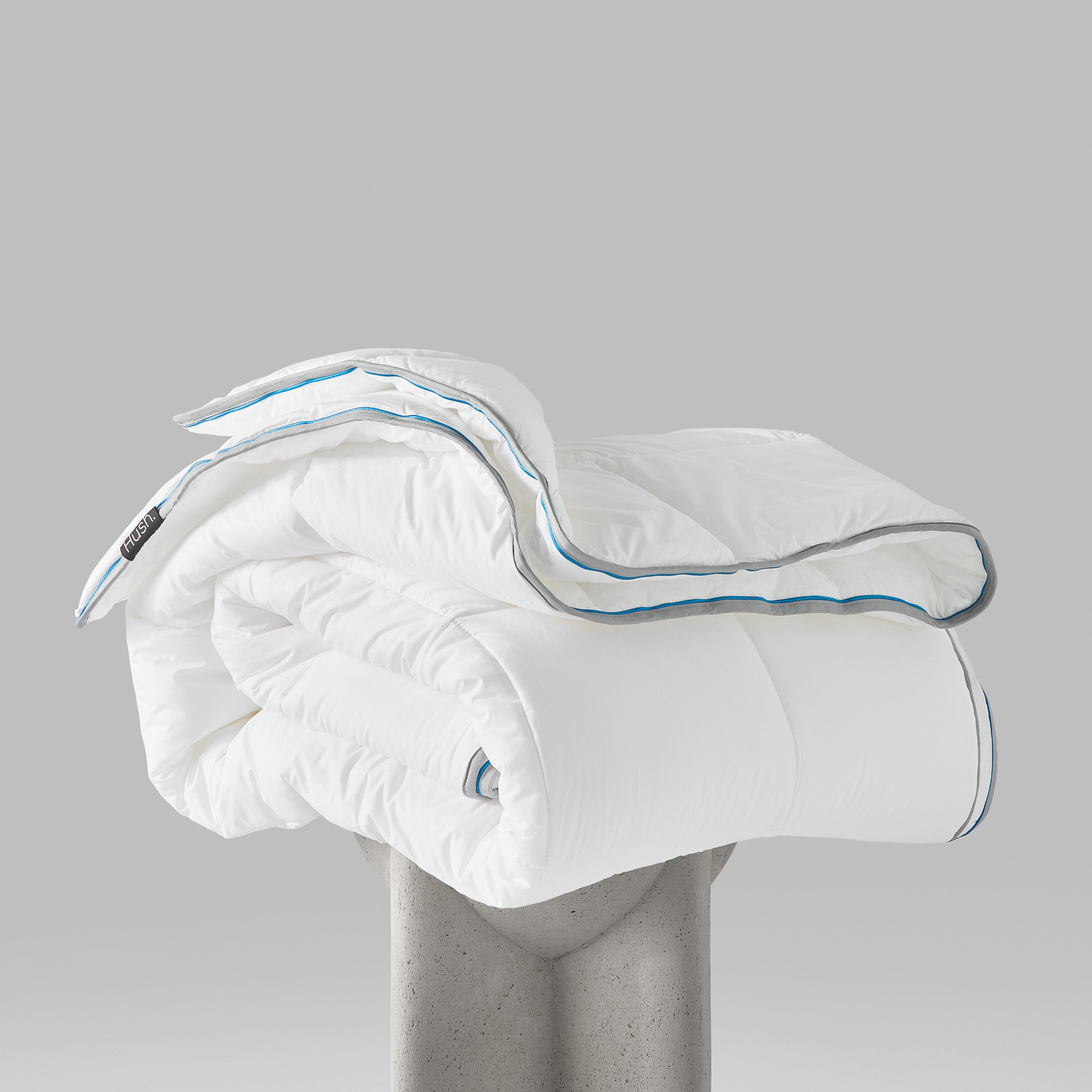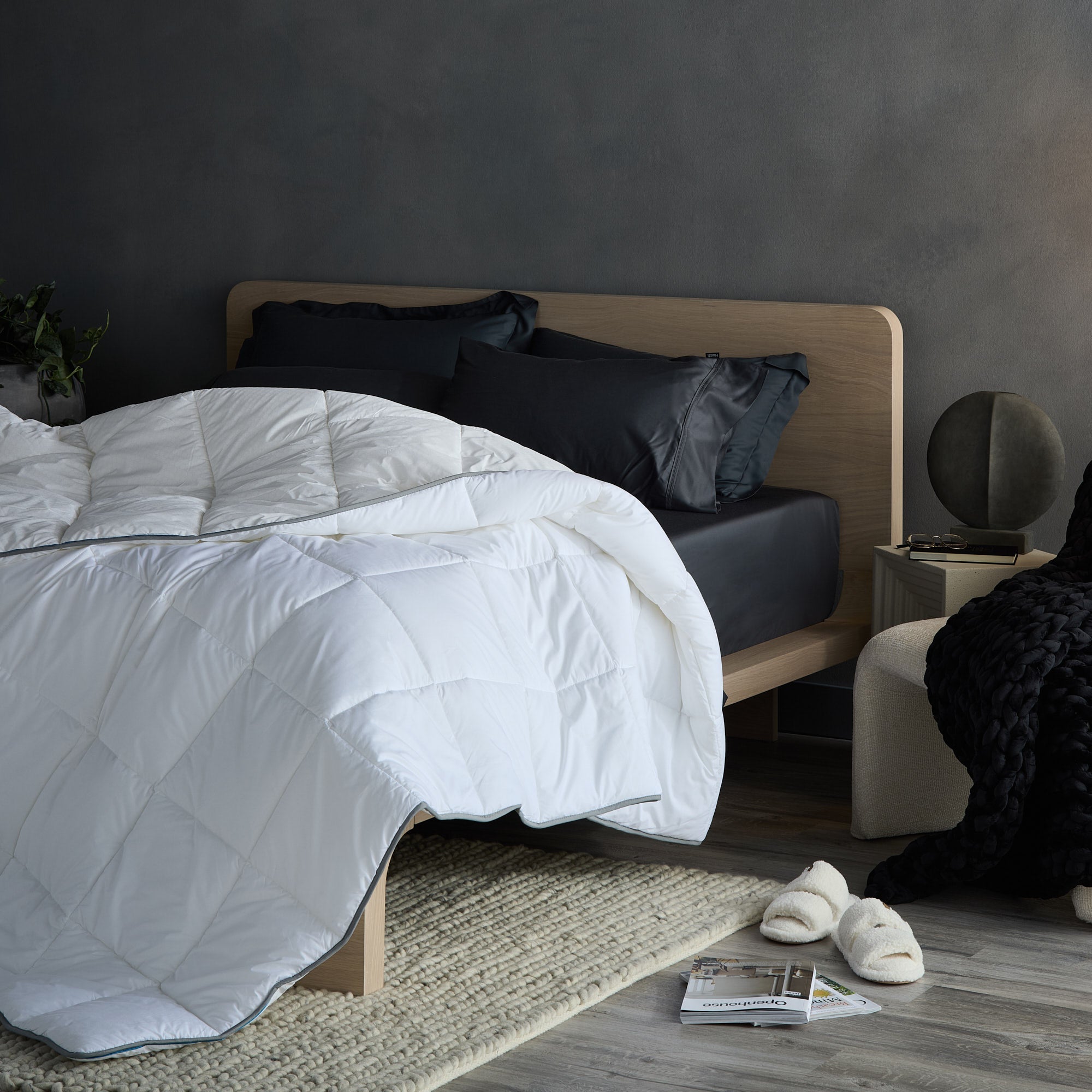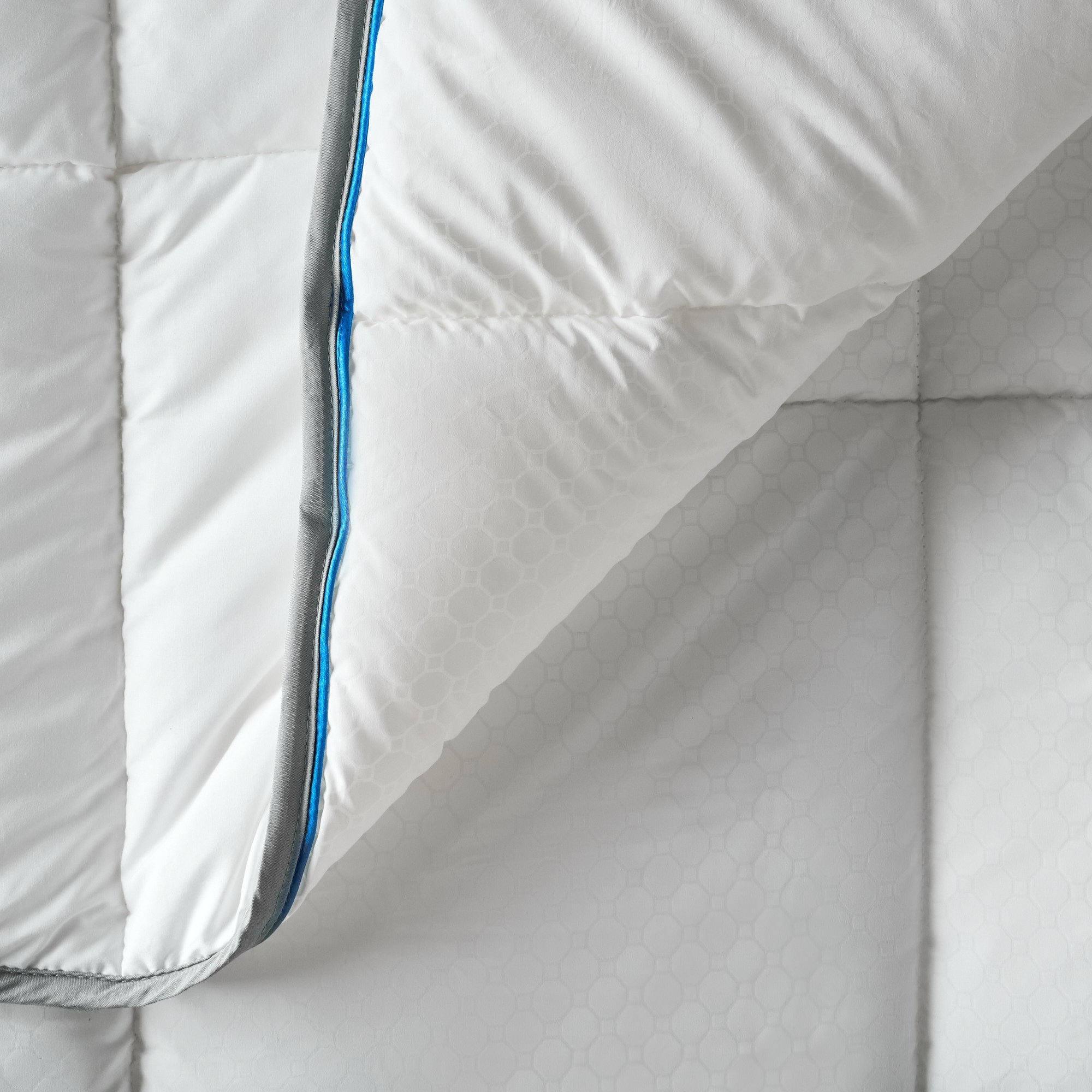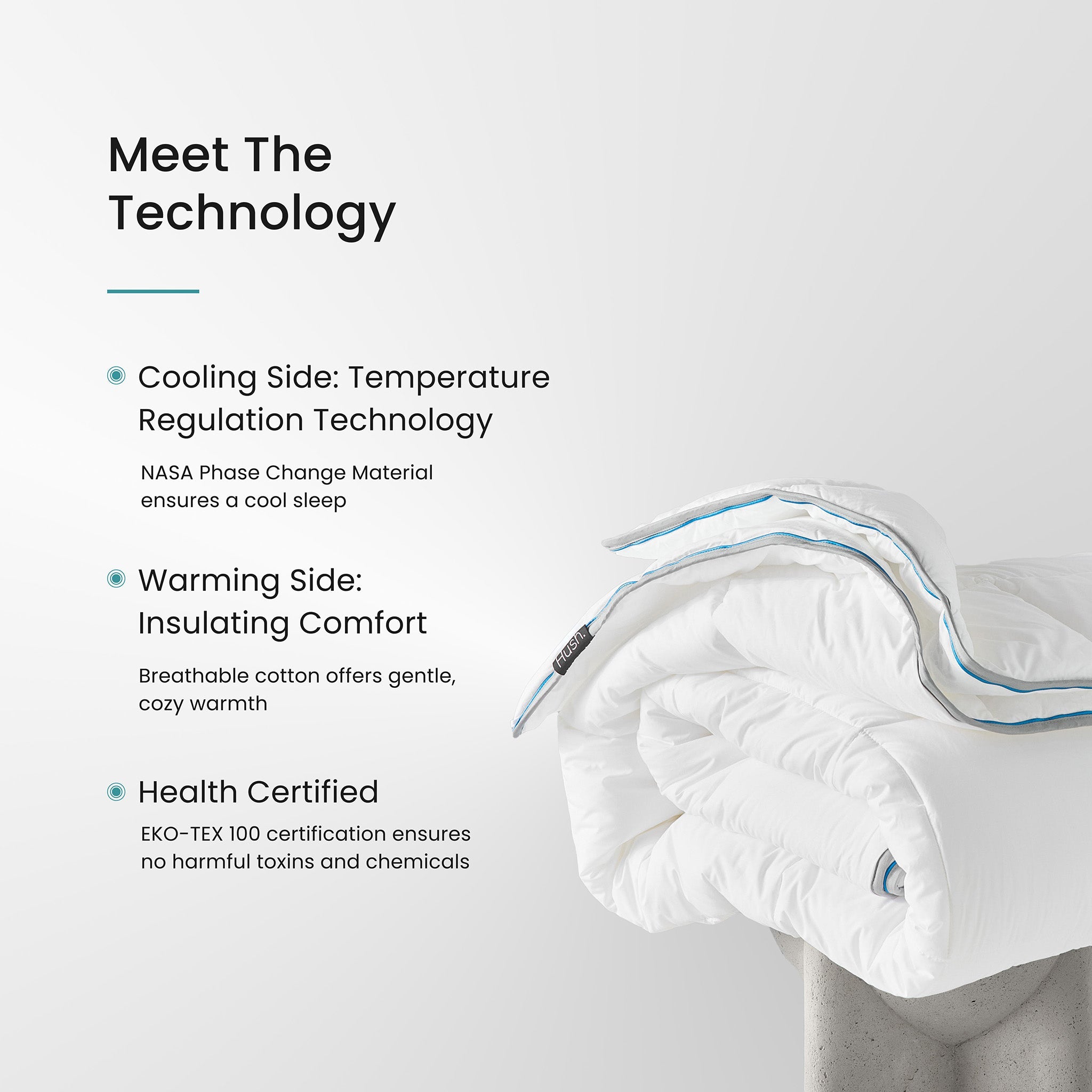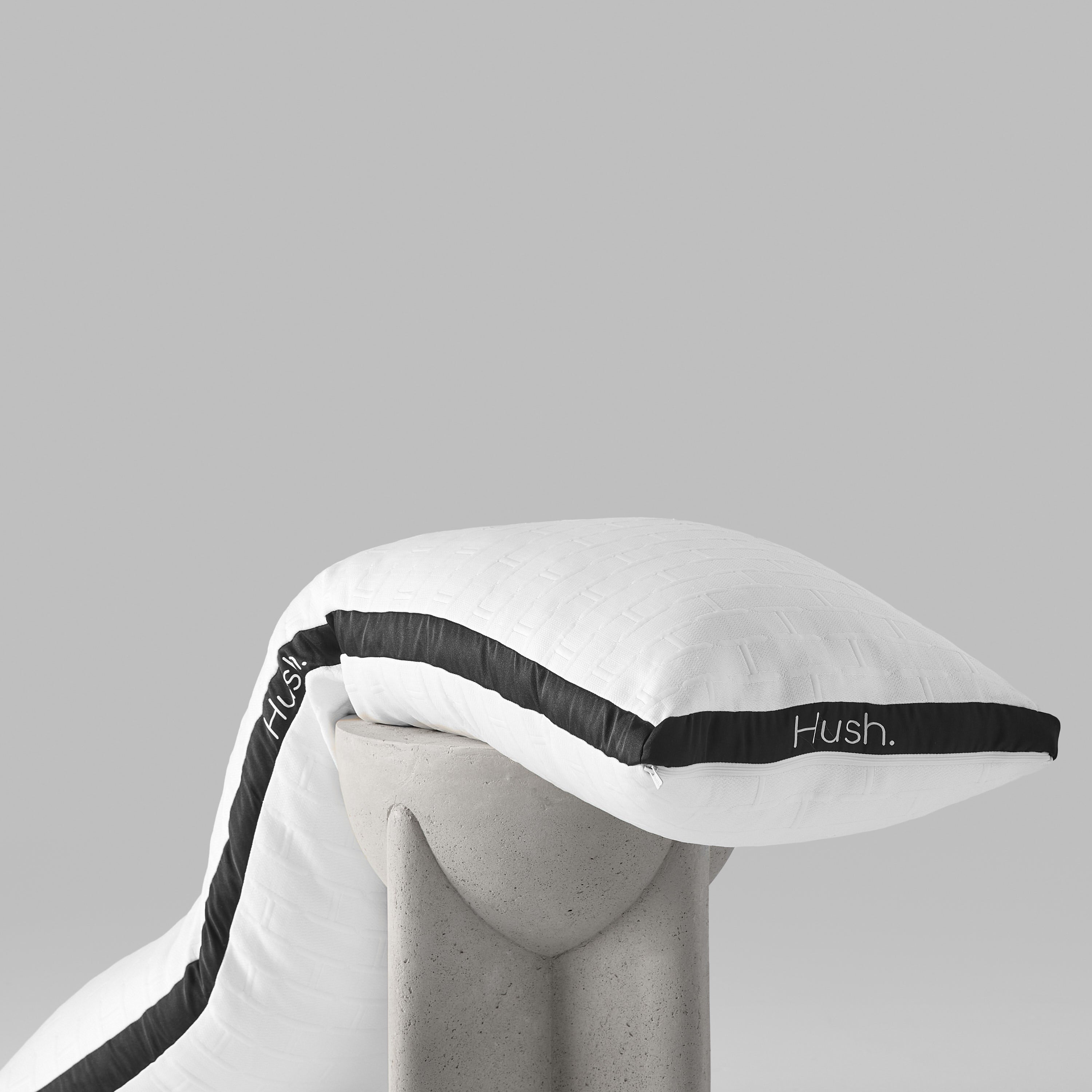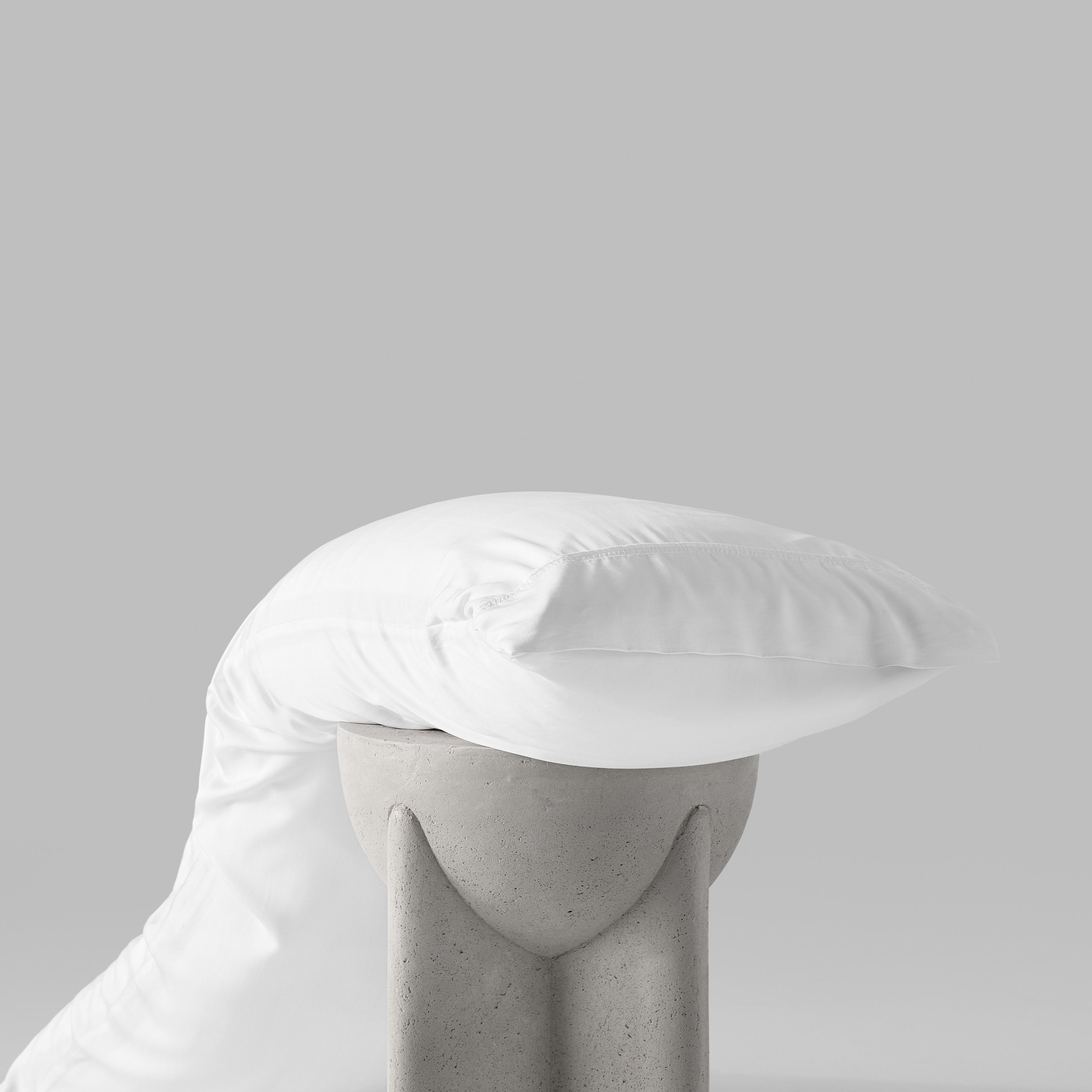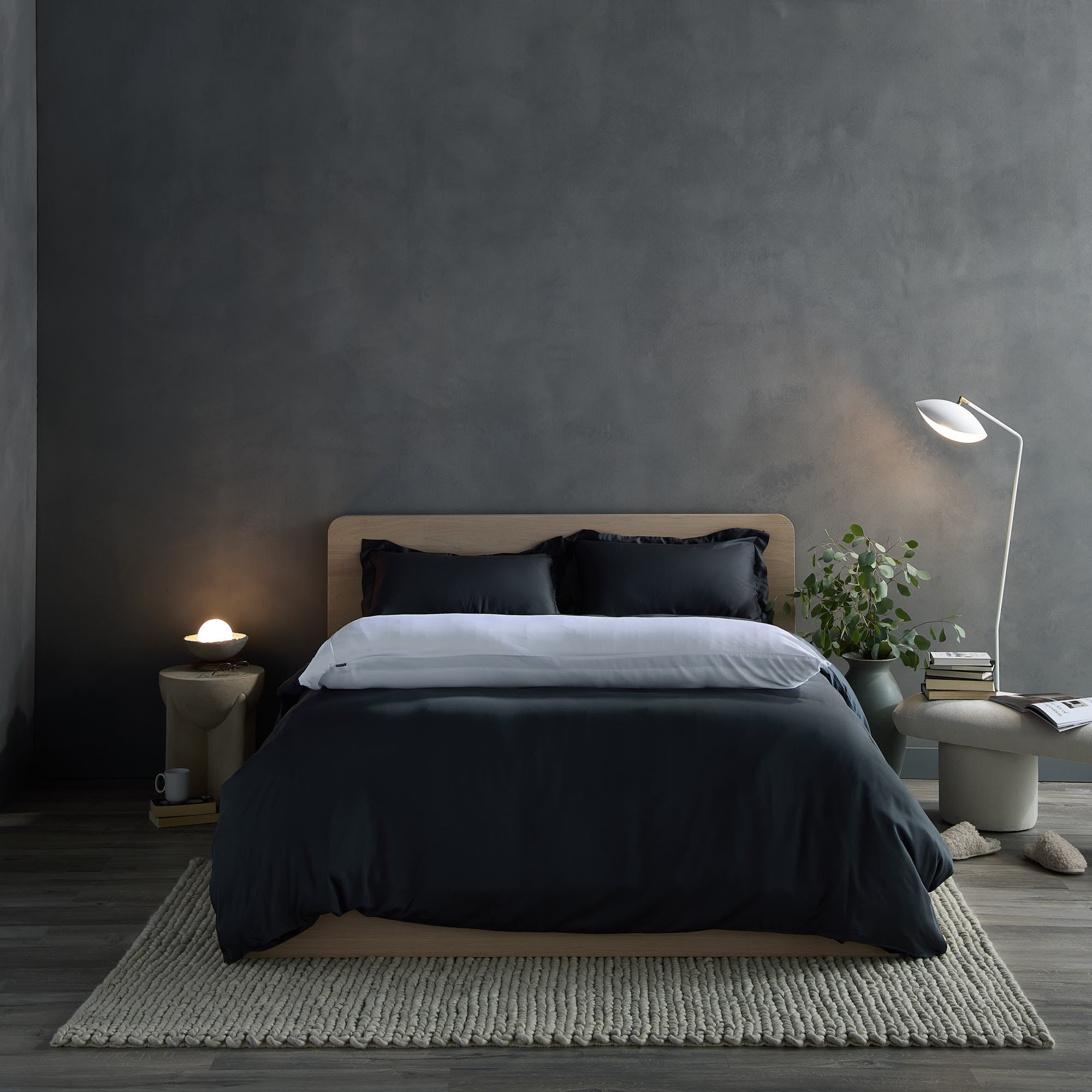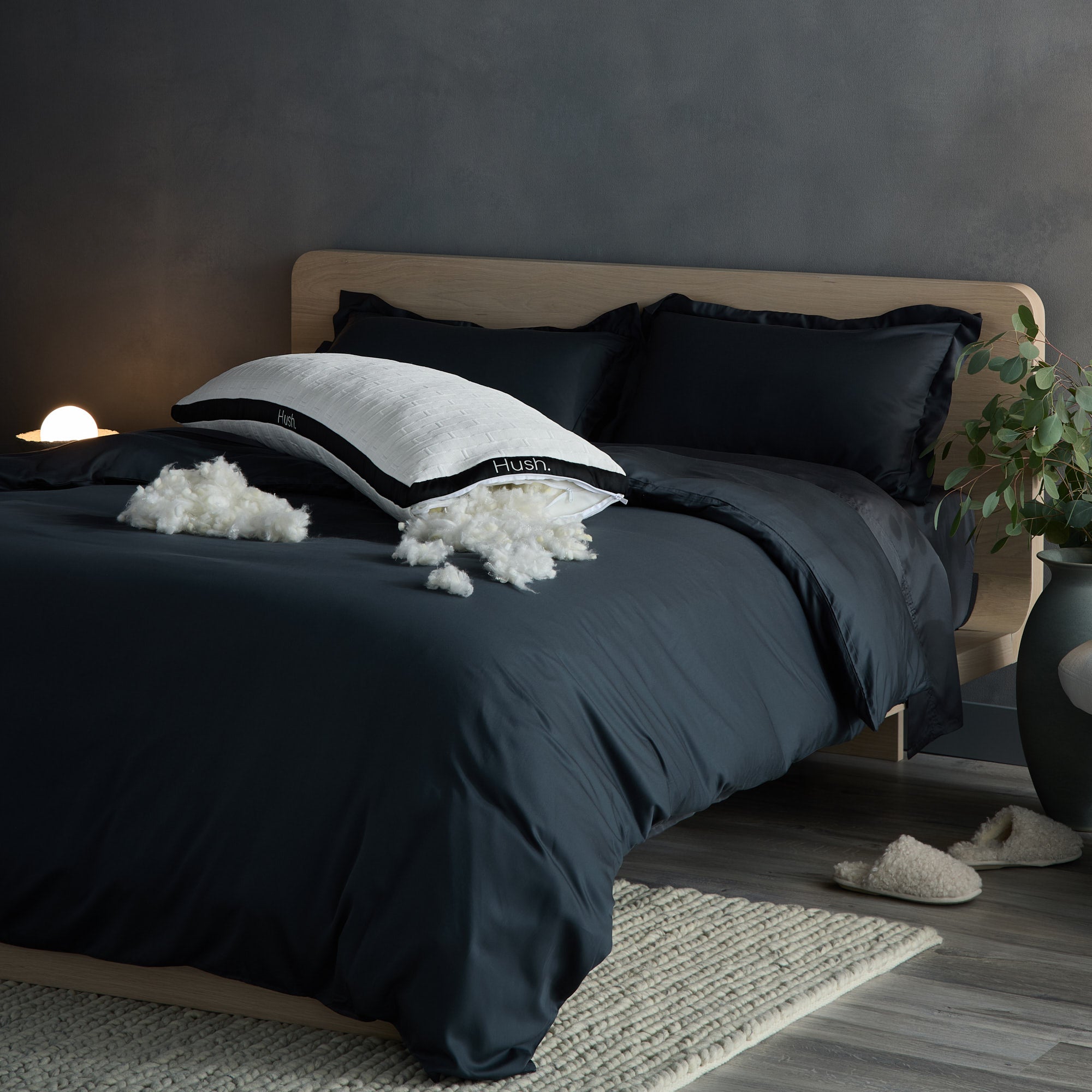You probably have a decent idea of the ideal thread count for linen or cotton sheets. But most people aren’t as familiar with bamboo bed sheets. What thread count is best for bamboo bedding? And are there other markers of quality to consider?
The quick answer is that most people will be most comfortable using bamboo sheets with a thread count of 250-350. That provides the best balance of airflow and softness for the vast majority of sleepers.
However, if you’re looking for high-quality bamboo sheets, focusing on thread count alone can lead you astray. Many companies have tricks to artificially inflate their thread counts while cutting corners on more important aspects of quality. Their sheets might sound great if you’re just looking at the numbers, but they’ll feel stuffy, pill quickly, and fall apart after just a few trips through the wash.
Keep reading to learn what really matters in a set of bamboo sheets, including what thread count really means, why a higher one isn't always better, and what else to consider when buying bamboo sheets.
Note: While designing our own bamboo bedding, we talked to dozens of manufacturers and tested out hundreds of different sheets. We’ll share everything we learned below. Before we jump into it though, we’ll just mention that our bamboo sheets are now available after months of research and testing. Check them out here.
At a glance:
Why Does Thread Count Matter?

People tend to assume the best bed sheets have a higher thread count. The truth is a little more complicated. Thread count simply measures the number of fabric threads in every square inch of the material.
In the past, this was a decent indicator of durability and softness, especially for cotton sheets. The only way to get a higher thread count was to use longer, thinner fibers from high-quality, long staple cotton. Threads made of these premium cottons were softer and less vulnerable to wear and tear.
But modern textile techniques enable companies to cheat on thread count, passing off mediocre cotton sheets as luxury products. Sneaky manufacturers might twist several strands of inferior cotton together to create "multi-ply" threads, then count each one of these thicker strings as multiple threads. The resulting sheets are heavier, scratchier, and less durable even though they have technically “higher” thread counts.
Anytime you see a sheet with a thread count above 800 or so, make sure to check whether the threads are single-ply. If the label doesn't say one way or the other, it’s almost certainly 2- or 3-ply. That means it’s low-quality material, possibly blended with synthetic fibers to make it thicker.
Does Thread Count Matter For Bamboo Sheets?

You might have noticed that the previous section had a lot to say about cotton sheets, but very little to say about bamboo. That’s because thread count originated as a quality metric for cotton, and it’s less important for other bedding materials.
Bamboo viscose fibers, in particular, have very different properties from cotton. The calculus of comfort, durability, and thread count isn’t the same.
In fact, it can be counterproductive to buy bamboo sheets with super-high thread counts. Breathability is one of the main advantages of bamboo sheets, but higher thread counts work against this by making the fabric denser and stuffier.
Bamboo sheets with moderate density, on the other hand, are lightweight and porous, letting hot air escape while wicking away sweat. That's why we recommend bamboo sheets over cotton for hot sleepers.
Besides, the fibers in bamboo sheets are naturally soft — even softer than linen or cotton. That means you don't have to weave them as tightly to get the same smooth texture. Even a 1000 thread count cotton sheet often doesn’t feel as soft as a bamboo sheet with a lower thread count.
The Best Thread Count For Bamboo Sheets

For most sleepers, the ideal thread count for bamboo bedding is between 250 and 350. That leaves plenty of room in the weave for your body heat to escape, which is perfect for hot sleepers. Because of their naturally soft fibers, bamboo sheets in this range will still feel as luxurious as high-thread count Egyptian cotton.
It's rare to find bamboo sheets with a lower thread count than 250. If you do, they're probably cheap and flimsy. They'll also feel coarser than typical bamboo sheets (though still softer than cotton or linen sheets with an equivalent thread count). Unless budget is your only concern, we recommend avoiding these low-grade sheets.
Bamboo bed sheets in the 400-500 thread count range will be thicker and less breathable. You'll still benefit from the moisture-wicking properties of bamboo, but the sheets will trap more heat against your body. That could be a good thing if you tend to run cold at night. Otherwise, there’s not much reason to choose bamboo sheets with such a high thread count.
Be very wary of any bamboo sheet set with a listed thread count higher than 600. Even with cotton sheets, most experts agree you won’t notice much of an increase in softness and durability past this point. That’s even more true for bamboo, which is naturally softer and silkier than cotton.
Super-high thread counts on bamboo sheets usually mean that the manufacturer is trying to trick you. Either they’re using multi-ply threads that will fray more easily, or they’re blending the bamboo with some other fabric, which cuts down on breathability. When buying bamboo bedding, try to verify that it’s made entirely of bamboo.
Beyond Thread Count: What to Consider When Choosing Bamboo Sheets

Identifying the best bamboo sheets involves a lot more than just thread count. Here are a few other factors you should take into account:
Weave Pattern
The way bamboo sheets are woven has a major impact on their texture. It also affects the ideal thread count. A tighter weave can get the same level of durability with fewer threads, though that usually means sacrificing softness.

The most common weaves for bamboo fabric are sateen, percale, and twill. Sateen fabric uses a three-over, one-under weave pattern, leaving more exposed threads on the surface. This creates a silky texture that feels cool and smooth against your skin. Bamboo sateen is also highly resistant to wrinkling.
The main drawback of a sateen weave for bamboo bedding is lower durability. With more threads exposed, there are more opportunities for them to snag against other surfaces. That can cause small breaks in the fabric that lead to pilling.
This risk is lower with a thread count of 300 or more — a tighter weave has fewer loose threads that can snag and snap. Avoid sateen fabric with less than 300 threads per square inch.
A percale weave pattern is a simple repeating grid, alternating one thread over with one under. This is good for breathability, but worse for softness. Percale bamboo bed sheets won't feel as luxurious as those with a sateen weave, but hot sleepers may appreciate the enhanced airflow. Percale sheets also tend to be more lightweight than bamboo sateen, since they can be made with a slightly lower thread count.
A twill weave is highly textured, with a visible diagonal pattern. It’s the same style used for denim clothing. Twill-woven bamboo bedding is very sturdy, but not as smooth as percale or sateen. It's also more likely to shrink in the wash.
Fiber Strength
The weave pattern isn't the only thing that affects the durability of bamboo bed sheets. The strength of the actual bamboo fibers can also vary quite a bit. Bamboo sheets made of weaker fibers tend to pill up very quickly as the threads develop thousands of tiny breaks.
A high thread count can reduce this effect somewhat. Tightly woven threads have less room to rub against each other and become frayed. That’s another important reason why thread count has often been associated with quality. But if you start with quality fibers, you can create a lightweight fabric that's still highly durable.

Unfortunately, it's not always easy to gauge the strength of the fibers in a given set of bamboo bedding. These fabrics have hundreds of subtle variations, but most companies just use the catch-all term “bamboo sheets.” Although the industry has a 5-point scale to measure pilling resistance, retailers also generally don’t share their scores with the public. It can be hard to get the real story.
That's why it's important to check the reviews when buying bamboo sheets. Customers will definitely notice if their sheets begin pilling after just a few wash cycles, and they’ll let you know in their reviews!
Finish
After bamboo textiles are woven, they're left with lots of microscopic hairs sticking out of the threads. Though you can't see them with the naked eye, they can scrape against your skin and make the texture rougher than most people like. To counteract this problem, bamboo sheets are "finished" with a process that gets rid of those miniature fibers.
This usually involves a technique called "singeing" or "gassing". The sheet is rapidly passed over a hot surface or an open flame, burning off the tiny protruding hairs.

Another way to finish bamboo sheets is to press them between heavy rollers. This is sometimes called "calendaring." It winds the small bits of fuzz tightly around the larger threads, creating a smooth, soft texture.
Calendaring is much less common, but it avoids the main drawback of singeing: the tiny gaps in the weave left behind by the burned hairs. Those small holes leave room for friction between threads, which can lead to pilling. In effect, singeing slightly lowers the thread count of the bedding.
Both methods create a smooth surface. But that smoothness lasts longer with calendaring. That's why we prefer to press our Hush bamboo sheets, leaving them silky-soft without sacrificing durability.
Sustainability
One perk of bamboo bedding is its low environmental footprint. Bamboo farming uses much less water and fertilizer than cotton or flax cultivation. And the fast-growing shoots capture a lot of carbon. However, not all bamboo sheets are equally eco-friendly.

For one thing, bamboo isn’t always grown organically. Some farmers use harsh pesticides and destructive farming practices. It's worth taking a close look at the product description to make sure your bamboo sheets are sustainably sourced.
The manufacturing process that produces bamboo viscose can also involve some very caustic chemicals. Safety-conscious shoppers should look for bamboo sheets with a certification from OEKO-TEX®. This international watchdog organization monitors consumer products to make sure they’re free of toxic substances like phthalates and formaldehyde.
In case you were wondering: yes, our Hush sheets are OEKO-TEX® certified and made of organic bamboo.
What's the Thread Count of Hush Bamboo Sheets?
When we designed our own bamboo sheets, we opted for a thread count of 300. That falls right in the sweet spot for breathability and softness. But there are a few other unique factors that make our bamboo sheet set even more comfortable than you’d guess from its thread count.

First of all, there's the pressed-smooth finish we described above. Combined with a silky sateen weave, it makes Hush sheets incredibly soft and deliciously cool to the touch.
Plus, we go the extra mile to source the strongest bamboo viscose. We even make a point not to buy bamboo during the summer, because hot weather weakens the fibers. As a result, our bamboo sheets have the highest possible grade for pilling resistance. They'll stay smooth over years of repeated washing.
We're so proud of the Hush Iced 2.0 bamboo sheets that we’ll give you a 100-night sleep trial to try them out risk-free. See for yourself how much difference the right fabric and thread count can make.
